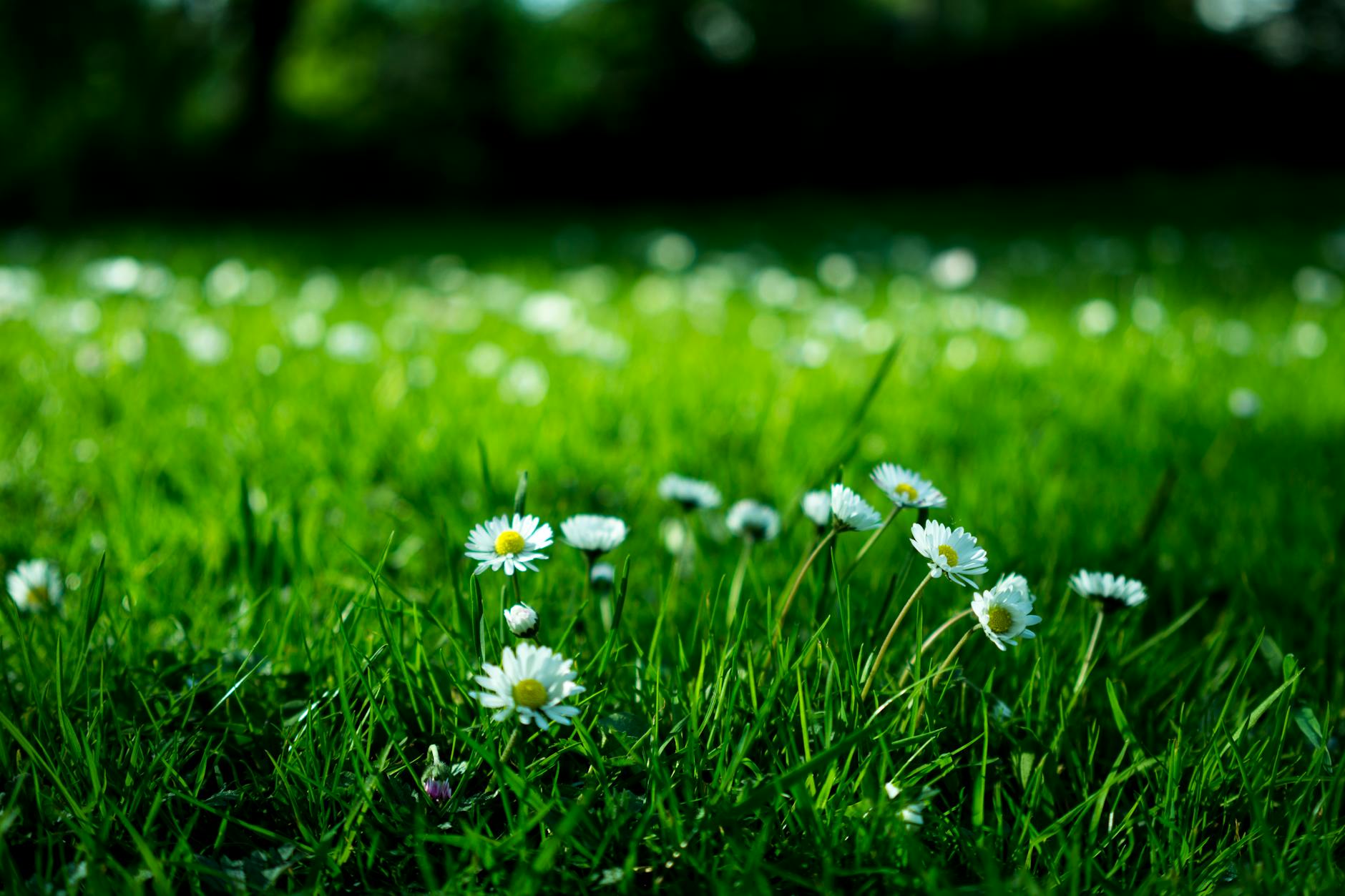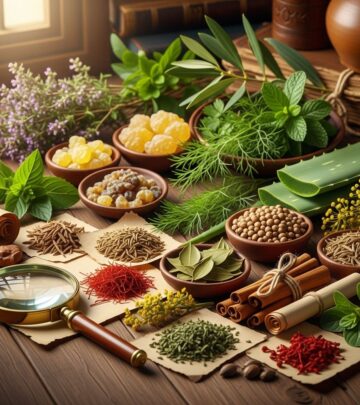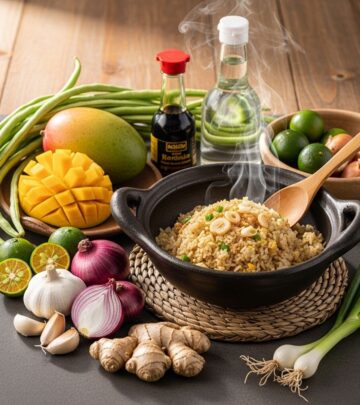Green Flowers: 10 Stunning Varieties To Elevate Your Garden
Discover the subtle beauty and versatility of green blooms to add depth and contrast to your garden

Green isn’t just for leaves and stems anymore. While vibrant reds, pinks, and purples typically steal the spotlight in gardens, green flowers offer a sophisticated alternative that can transform your landscape with their subtle beauty. These unique blooms add layers of texture, depth, and interest to garden beds and cutting gardens, rewarding observant viewers with their understated elegance throughout the growing season.
From the palest mint green to vibrant chartreuse, green flowers provide the perfect backdrop to make other colors pop. When brilliant red flowers, hot pinks, and soft purples are placed against these muted green tones, the entire garden composition becomes more dynamic and visually interesting. Green flowers also create striking contrast in bouquets, serving as the perfect complement to more colorful blooms when displayed in arrangements.
While many green flowering plants are annuals that complete their lifecycle in a single season, there are also numerous perennial and shrub options that return year after year. When selecting perennial green flowers, be sure to choose varieties that will thrive in your USDA Hardiness zone. Remember that the hardiness zone map was updated recently, so your zone may have changed – check your current zone before making selections for your garden.
Why Include Green Flowers in Your Garden?
Before diving into specific varieties, let’s explore the unique benefits green flowers bring to your landscape:
- Visual harmony – Green flowers create a seamless transition between foliage and more vibrant blooms
- Sophisticated backdrop – They provide the perfect background to showcase more colorful flowers
- Extended visual interest – Many green flowers maintain their color longer than other blooms
- Unique bouquet elements – Green flowers add unexpected dimension to cut flower arrangements
- Wildlife attraction – Many green-flowering plants still produce nectar that attracts beneficial pollinators
Persian Lily (Fritillaria)
Persian lily, also known as fritillaria, grows from bulbs planted in the fall for spectacular spring blooms. Available in various colors including striking green varieties, these elegant flowers feature distinctive checkered patterns on bell-shaped blooms. An added benefit: fritillarias are one of the few bulbs that tend to resist damage from hungry garden rodents like chipmunks and squirrels, making them an excellent choice for gardens where bulb predation is a problem.
Type of plant: Perennial
Growing conditions: Well-drained soil, partial to full sun
Height: 12-36 inches depending on variety
Bloom time: Early to mid-spring
Green Hellebore (Helleborus)
Also known as Lenten rose, hellebores produce lovely cup-shaped flowers in late winter to early spring, often when snow is still on the ground. The green varieties range from pale lime to deep forest green, sometimes with speckles or veining. These long-lived perennials are deer-resistant and prefer partial shade, making them perfect for woodland gardens or areas beneath deciduous trees.
Type of plant: Perennial
Growing conditions: Well-drained soil, partial to full shade
Height: 12-18 inches
Bloom time: Late winter to early spring
Green Zinnia
Green zinnias bring a touch of chartreuse to summer gardens and are excellent for cutting gardens. Varieties like ‘Envy’ and ‘Green Button’ produce lime-green to emerald blooms that make excellent fillers in bouquets. These easy-care annuals thrive in hot weather and continue blooming until frost with regular deadheading.
Type of plant: Annual
Growing conditions: Well-drained soil, full sun
Height: 24-36 inches
Bloom time: Summer to fall
Green Hydrangea
Many hydrangea varieties naturally transition to green as they age, but some cultivars are specifically prized for their green flowers. ‘Limelight’ and ‘Little Lime’ produce large panicles of lime-green blooms that later develop pink tones. The ‘Heart Throb’ variety showcases dark red blooms edged with green that age to predominantly green with hints of red, offering visual interest across three seasons.
Type of plant: Deciduous shrub
Growing conditions: Rich, well-drained soil, morning sun with afternoon shade
Height: 3-8 feet depending on variety
Bloom time: Summer into fall
Bells of Ireland (Moluccella laevis)
Despite its name, Bells of Ireland isn’t native to Ireland but rather to Western Asia. This annual produces tall spikes covered with green, bell-shaped calyces (the true flowers are tiny and white, nestled inside the green bells). These architectural plants add height and structure to gardens and dried arrangements.
Type of plant: Annual
Growing conditions: Well-drained soil, full sun to light shade
Height: 24-36 inches
Bloom time: Summer
Lady’s Mantle (Alchemilla mollis)
Lady’s Mantle features clusters of tiny chartreuse flowers held above scalloped, velvety leaves that capture dewdrops in the morning. This old-fashioned perennial adds a frothy texture to garden borders and makes an excellent ground cover in partial shade areas. The flowers are also prized in bouquets for their delicate appearance.
Type of plant: Perennial
Growing conditions: Average soil, partial shade to full sun
Height: 12-18 inches
Bloom time: Late spring to early summer
Green Carnation
Green carnations like ‘Green Trick’ feature fluffy, moss-like blooms in vibrant green. These unique flowers add interesting texture to gardens and are spectacular in floral arrangements. While naturally green varieties exist, traditional carnations are sometimes dyed green for special occasions like St. Patrick’s Day.
Type of plant: Perennial often grown as an annual
Growing conditions: Well-drained soil, full sun
Height: 12-24 inches
Bloom time: Summer
Green Chrysanthemum
Green chrysanthemums like ‘Green Mist’ and ‘Kermit’ produce lime-green to deep green blooms in various forms from spider to button types. These fall-blooming plants add fresh color to autumn gardens when many other flowers have faded. They make excellent cut flowers and can be grown as perennials in milder climates.
Type of plant: Perennial often grown as an annual
Growing conditions: Well-drained soil, full sun
Height: 18-36 inches depending on variety
Bloom time: Fall
Green Gladiolus
Green gladiolus varieties like ‘Green Star’ produce tall spikes of lime-green flowers that add vertical interest to gardens and arrangements. These summer-blooming bulbs (technically corms) are planted in spring for summer blooms and can be lifted and stored in colder climates for winter protection.
Type of plant: Tender perennial bulb
Growing conditions: Well-drained soil, full sun
Height: 36-48 inches
Bloom time: Summer
Green Rose (Rosa chinensis ‘Viridiflora’)
The Green Rose is a rare botanical curiosity dating back to the 19th century. Instead of petals, it produces leafy green sepals that form rose-like structures. While not as showy as traditional roses, these unusual blooms make interesting conversation pieces in gardens and arrangements.
Type of plant: Perennial shrub
Growing conditions: Well-drained soil, full sun
Height: 2-3 feet
Bloom time: Summer to fall
Designing with Green Flowers
To maximize the impact of green flowers in your landscape, consider these design strategies:
- Use green flowers as transitions between different garden areas
- Pair them with complementary colors like purple, magenta, and deep red for maximum contrast
- Incorporate different green tones from pale lime to deep emerald for depth
- Include green flowers in cut flower gardens for unique bouquet components
- Consider the seasonal sequence to ensure green blooms throughout the growing season
| Flower Type | Bloom Season | Garden Use | Cutting Value |
|---|---|---|---|
| Hellebore | Late winter/Early spring | Shade gardens, Woodland edges | Good |
| Persian Lily | Spring | Borders, Bulb gardens | Excellent |
| Lady’s Mantle | Late spring/Early summer | Borders, Ground cover | Excellent |
| Green Zinnia | Summer to frost | Cutting gardens, Borders | Excellent |
| Green Hydrangea | Summer into fall | Foundation plantings, Borders | Excellent |
| Green Chrysanthemum | Fall | Autumn gardens, Containers | Excellent |
Care Tips for Green Flowers
While specific care varies by plant type, here are general guidelines to keep your green flowers thriving:
- Soil preparation – Most green flowers prefer well-drained, moderately fertile soil
- Light requirements – Check specific plant needs; many green flowers prefer full sun or partial shade
- Watering – Consistent moisture is important, especially during establishment
- Fertilizing – Light fertilization encourages blooms without excessive foliage growth
- Deadheading – Remove spent blooms to encourage continued flowering and prevent self-seeding
Frequently Asked Questions
Q: Are green flowers actually green or is it just marketing?
A: Many flowers marketed as ‘green’ truly do have naturally green petals or sepals. Some green flowers, like hydrangeas, transition to green as they age. There are also flowers like ‘Green Trick’ carnations that have been specifically bred for their green coloration.
Q: Do green flowers attract pollinators?
A: Yes, many green flowers still produce nectar and pollen that attract bees, butterflies, and other beneficial insects. While they may not be as immediately visible to pollinators as brightly colored flowers, their unique fragrance and nectar guides help pollinators locate them.
Q: Can I grow green flowers in containers?
A: Absolutely! Many green flowers like zinnias, chrysanthemums, and smaller hydrangea varieties perform beautifully in containers. Ensure proper drainage and appropriate pot size for the specific plant’s needs.
Q: How do I preserve green flowers for arrangements?
A: Many green flowers dry well, retaining much of their color. Hang bunches upside down in a dark, dry location with good air circulation. Some varieties, like hydrangeas, can be preserved in glycerin solutions for long-lasting arrangements.
Q: Are green flowers harder to grow than colorful ones?
A: Not necessarily. Green flowers have the same range of care requirements as their more colorful counterparts. Some, like Lady’s Mantle and green hydrangeas, are quite easy for beginners, while others may require more specific conditions.
By incorporating these unique green blooms into your landscape, you’ll create a garden with depth, contrast, and year-round interest. Whether used as subtle backdrops for more vibrant flowers or as focal points in their own right, green flowers offer a sophisticated alternative to traditional garden palettes while still providing all the beauty and benefits of flowering plants.
References
- https://www.countryliving.com/gardening/g32131343/green-flowers/
- https://www.countryliving.com/uk/news/a60425910/rhs-chelsea-flower-greener-ever/
- https://town-n-country-living.com/cottage-flowers-to-add-to-your-garden.html
- https://www.instagram.com/p/DEU9pYVNLOZ/
- https://southernlivingplants.com/the-collection/plant/heart-throb-hydrangea/
Read full bio of Shinta











